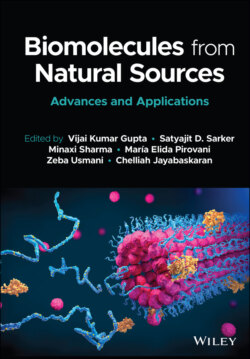Читать книгу Biomolecules from Natural Sources - Группа авторов - Страница 17
1.1.1.4 Food Industry
ОглавлениеDue to their emulsifying and anti-bacterial activities biosurfactants show great potential in the food industry. Because of their low toxicity and biodegradability their use can be explored as additives in food.
An emulsion describes a dispersion of two or more phases that do not blend with each other, resulting in a liquid–liquid separation. Emulsions are usually unstable and sensitive to agglomeration of the inner phase, through the addition of biosurfactants the system can be stabilized by the reduction of the surface and interfacial tension, thereby preventing the coalescence through steric and electrosteric barriers (Santos et al. 2016). Examples of foods that are defined as emulsions would be milk, heavy cream or mayonnaise.
Another use in the food industry is caused by the anti-biofilm properties of biosurfactants. Biofilms are a significant issue since they can lead to faster food spoilage, distribution of diseases or contamination. Biosurfactants have been shown to have strong anti-adhesive activities against bacterial and yeast strains, through modifying the physicochemical properties of surfaces or changing bacterial interactions. Surfaces can therefore be pre-conditioned using biosurfactants (Mnif and Ghribia 2016).
There are several further applications in food, such as controlling fat globule agglomeration, improving texture and consistency of fat-based products or stabilizing aerated systems (Santos et al. 2016).
